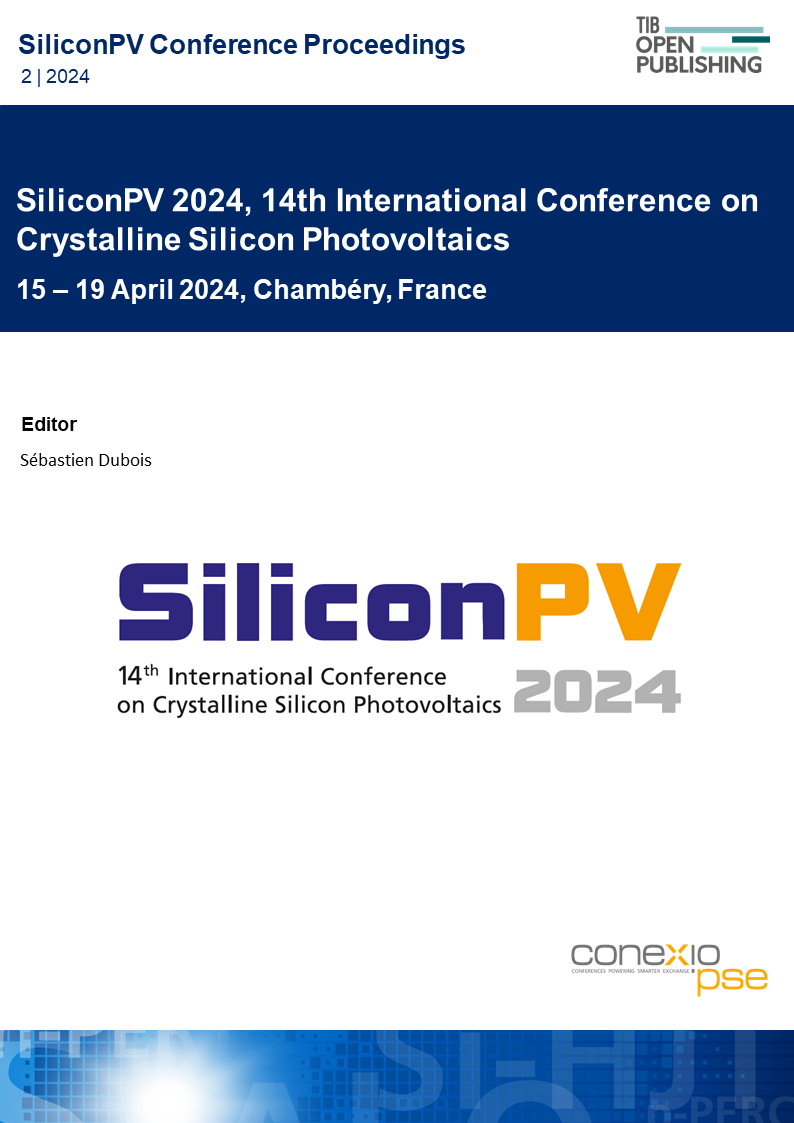Enhancing Electric Vehicle Autonomy With Solar Energy: A Case Study of the “Takai Urban” in Northern Chile
DOI:
https://doi.org/10.52825/siliconpv.v2i.1307Keywords:
Battery Electric Vehicles, Solar Integration, Zebra Solar Cells, Vehicle Autonomy, Northern ChileAbstract
The global transition towards electromobility presents unique challenges, particularly in regions with limited infrastructure. In Northern Chile, the sparse distribution of charging stations, with distances often exceeding 100 km, complicates the widespread adoption of electric vehicles (EVs). This study investigates the feasibility of enhancing the autonomy of the "Takai Urban", a solar-assisted battery EV through the integration of Zebra IBC solar cells, leveraging the region's high solar irradiance. Initially, the Takai urban EV had a maximum range of 70 km per charge. Through virtual modelling and simulations, which incorporated GPS and meteorological data along a typical 43.3 km route in Antofagasta city, we examined the impact of solar integration on vehicle performance. The simulations indicated that with the strategic placement of high-efficiency solar cells, the vehicle's range could be extended by approximately 48%, achieving a new maximum of 104 km per charge. This approach not only demonstrates the potential for solar-assisted EVs in regions like Northern Chile but also underscores the broader implications for sustainable mobility in similar environments globally. The results highlight the potential for practical enhancements in EV designs using solar technologies, focusing on efficiency improvements and sustainable mobility solutions.
Downloads
References
K. Araki et al., "State-of-the-Art and Expected Benefits of PV-Powered Vehicles," IEA PVPS, 2021.
A. J. Carr and B. K. Newman, "Expert survey on technical requirements of PV-powered passenger vehicles," IEA PVPS, 2024.
R. Kopecek et al., “Interdigitated Back Contact Technology as Final Evolution for Industrial Crystalline Single-Junction Silicon Solar Cell,” Solar, vol. 3, no. 1, pp. 1–14, Dec. 2022, doi: https://doi.org/10.3390/SOLAR3010001.
S. Kim et al., “Future Options for Lightweight Photovoltaic Modules in Electrical Passenger Cars,” Sustainability 2021, vol. 13, no. 5, p. 2532, Feb. 2021, doi: https://doi.org/10.3390/SU13052532.
N. R. Pochont and R. Sekhar, “Recent trends in photovoltaic technologies for sustainable transportation in passenger vehicles – A review,” Renewable and Sustainable Energy Reviews, vol. 181, pp. 113317, Jul. 2023, doi: https://doi.org/10.1016/j.rser.2023.113317.
P. Alvarez Lopez, M. Behrisch, L. Bieker-Walz, J. Erdmann, Y.-P. Flötteröd, R. Hilbrich, L. Lücken, J. Rummel, P. Wagner, y E. Wießner, "Microscopic Traffic Simulation using SUMO," en 2019 IEEE Intelligent Transportation Systems Conference (ITSC), pp. 2575-2582, Maui, USA, Nov. 2018, doi: https://doi.org/10.1109/ITSC.2018.8569938.
S. Rodríguez-Romero et al., “Propuesta de modelo para estimar el estado de carga de baterías de LiFePO4 para un vehículo eléctrico,” In CIES2020, pp. 1043–1050, Nov. 2020, doi: https://doi.org/10.34637/CIES2020.2.1123.
B. Goss, I. R. Cole, E. Koubli, D. Palmer, T. R. Betts, and R. Gottschalg, “Modelling and prediction of PV module energy yield,” The Performance of Photovoltaic (PV) Systems: Modelling, Measurement and Assessment, pp. 103–132, Jan. 2017, doi: https://doi.org/10.1016/B978-1-78242-336-2.00004-5.
Published
How to Cite
Conference Proceedings Volume
Section
License
Copyright (c) 2024 Fernando Castro-Gallardo, Jorge Rabanal-Arabach, Sebastián Rodríguez-Romero, Douglas Olivares, Edward Fuentealba

This work is licensed under a Creative Commons Attribution 4.0 International License.
Accepted 2024-11-28
Published 2025-02-03
